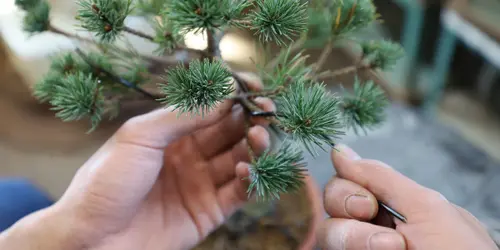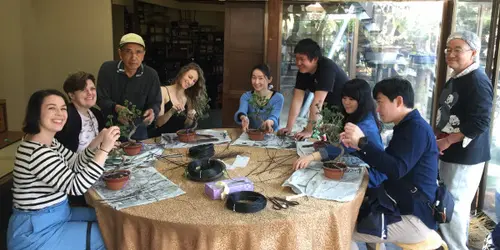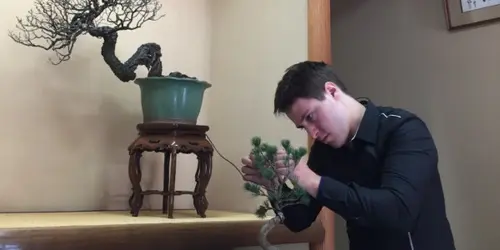The art of Bonsai
- Edogawa City
- English
- 1 hour
- Youtube
Learn about the age-old art of bonsai and all its nuances in an authentic Tokyo setting.
Bonsai, the art of nature's miniaturisation
Teaching us humility in the face of time, bonsai trees bear a memory and an age-old heritage. Literally meaning "plant grown in a pot". The tree that is the object of it is made smaller using branch and root pruning techniques, and by managing the nutrient supply. The leaves, or needles in the case of conifers, are also shrunk.
The origins of bonsai are Chinese and were introduced to Japan during the Heian period, which is also the period when Buddhism was introduced into Japan. Adopted by the aristocracy and quickly elevated to the rank of art, they symbolise eternity and harmony between humans and nature. For a long time, the art of bonsai was reserved for the nobility and the clergy, but its practice became popular in the XIVᵉ century, and eventually became known throughout the world, especially after the Second World War when bonsai were imported en masse from Japan.
A long-term quest for aesthetics
All kinds of trees can become bonsai and be cared for indoors and outdoors. The aim is an artistic one, the search for a perfect aesthetic.
The shape of the branches comes from pruning (regular cutting of buds and branch tips), or by binding the branches, or by the orientation of the pot (favouring growth in a certain direction). There are a wide range of different types of bonsai, differentiated by their shape. Some examples: a bonsai with a straight trunk is a chokkan, a tachiki will have curves in its trunk, a bonsai that seems to fall off a cliff is called a kengai, and a bonsai grown in a sloping pot, once the pot is levelled, will look as if it has been blown by the wind and will have the appearance of a leaning tree, and will be a shakkan or a fukingashi, etc.
Shunka-en, the bonsai museum
On this activity, you will have the chance to learn all about bonsai in an authentic environment. Head to Shunka-en in Tokyo's Edogawa district, a bonsai garden museum founded by Kunio Kobayashi, a 30-year-old award-winning bonsai master who is committed to spreading bonsai culture around the world, in part through his many apprentices from around the world.
From the small pond to the house built in the style of a tea pavilion, and the many bonsai trees in the garden, once you walk through the door, you enter a world of serenity and harmony. Before or after your visit, take the time to look at the large collection of books, ancient amphorae and prints dedicated to the beauty and harmony of bonsai.
The activity will last about 1 hour and you don't need to bring anything. It is not customary to take the bonsai with you, partly because of the difficult administrative procedures for bringing it back home. But if you wish to take the bonsai with you after your activity, for an additional fee, please let us know.


